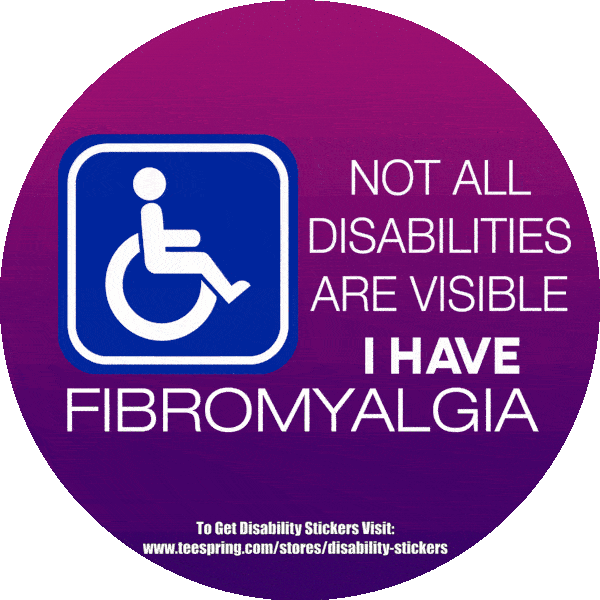We’ve all had that moment where we’ve had to use the restroom badly. We can’t hold it anymore, so we have to pull off the road or run across the house in order to get to the bathroom in time. It’s awkward and annoying if it happens on a usual basis, though, and an overactive bladder could be a symbol of so many other problems inside your body.
Did you know that there is likely a link between your overactive bladder and your fibromyalgia? Bladder control troubles or urinary incontinence is not impressive to talk about, but it is tremendously frequent. Millions of people young, old, male and female experience incontinence, Women experience incontinence twice as often as men. And women with fibromyalgia are still more liable to acknowledge bladder control troubles.
Bladder symptoms may include urinary frequency, incontinence, urgency and interstitial cystitis (bladder pain). If you have fibromyalgia and think that your symptoms may indicate a problem with your urinary tract or pelvic area, consult with your doctor. Your ache and uneasiness can be minimized, helping you to live a more energetic and satisfying life. Fibromyalgia has so many different symptoms and problems that can arise, one of which is bladder problems.
Bladder incontinence and urinary regularity can actually put a discouragement on your communal life, but fortunately there are some interventions that can help you breathe a more satisfying life. So you might find yourself mortified, thinking, “But how can I possibly bring this up?” You may be crippled by the fear of how awkward it would be. Want to know what’s more likely, though? That your doctor won’t react any differently than if you said, “Hey doc, my knee hurts.”
To people who work in the medical field, it’s just something you deal with, so you don’t get that uncomfortable reaction like when you bring up a taboo subject in social settings. If you still can’t imagine ever talking to your doctor about certain symptoms, try these things Write down your symptoms so the doctor’s office isn’t the first place you try to express them, Look for medical terminology to replace the words you’re not comfortable saying, Practice saying your symptoms aloud and If you still can’t face saying them to your doctor, just hand him/her your list. One more bladder trouble widespread in fibromyalgia syndrome is known as interstitial cystitis (IC).
The symptoms of interstitial cystitis (also known as irritable bladder syndrome or overactive bladder syndrome) include pain and a feeling of pressure in the pelvic area, recurrent urination, insist to urinate even when the bladder is unfilled, and pain throughout or after sex. People with interstitial cystitis may even become incontinent, which can be unpleasant and embarrassing, and need to use protective pads or special underwear.
The symptoms are similar to those of a bladder infection, but there is no infection present. While stress can certainly make fibromyalgia and related syndromes more problematic, it is not the major contributing cause to the development of interstitial cystitis. Anyone can have interstitial cystitis, but it is more common in women of all ages with or without fibromyalgia. The occurrence of bladder symptoms in patients with fibromyalgia has led to the development of a sensory rating tool known as the Fibromyalgia Bladder Index.
This tool allows doctors and patients to assess bladder symptoms that are not related to urinary tract infections. There are two subscales on the Fibromyalgia Bladder Index, one that allows for the isolation of Bladder Urgency and Pain and Bladder Frequency and Nocturia. Having a dependable ranking device allows doctors to appreciate evidently the symptoms the patient is experiencing and help to follow information about the succession or development of bladder troubles in patients with fibromyalgia.
As with all syndromes, a diagnosis of interstitial cystitis is completed by ruling out all other possible issues. This is repeatedly easier if you are by now diagnosed with fibromyalgia, chronic exhaustion syndrome, irritable bowel syndrome or other types of constant ache syndromes. One reason this diagnosis may be easier if you are already identified with a chronic pain syndrome is that the doctor you are working with will be aware of the often concurrent medical issues. Specialists are more probable to diagnose this syndrome than common doctors who may not be conscious of all the likely complications of a main fitness issue like fibromyalgia.
Management
- > Dietary factors to consider include limiting any diuretic types of foods or beverages from the diet. This includes carbonated beverages, caffeine containing beverages and all types of alcohol. Repeatedly highly spiced foods or extremely acidic foods can activate the situation of interstitial cystitis, and these should be eliminated from the diet and then reintroduced with monitoring to decide which foods can be tolerated and which cannot.
- > Smoking is linked to increased pain and bladder complications and for some people with interstitial cystitis smoking cessation is seen as a key component of management of the symptoms.
Occasionally, it’s a flaw that causes your bladder to be stationary just becoming more energetic can assist. Your doctor can give you prescription medication or other treatments that can help you to be more in control of your bladder and that can help you urinate less often.
In the worst cases, an adult diaper is not an embarrassing way to go. No one is going to know that you have it on, and they’re designed so that you can urinate subtly without embarrassment.
If you want to give this message to the world, then let all together wear .
Click Here to Get This T-Shirt
References:
- Urinary and Pelvic Symptoms in Fibromyalgia via Fibromyalgia Symptoms
- Bladder Control Problems Associated With Fibromyalgia by Sue via Fibro Daze
For support and Discussion join the group “Living with Fibromyalgia and Chronic Illness”


2 comments
[…] Bladder Disorders: Irritable bladder, frequent urinary infections, and incontinence are also found in those with […]
[…] Interstitial cystitis/irritated bladder […]